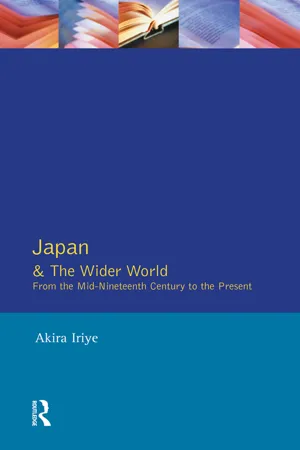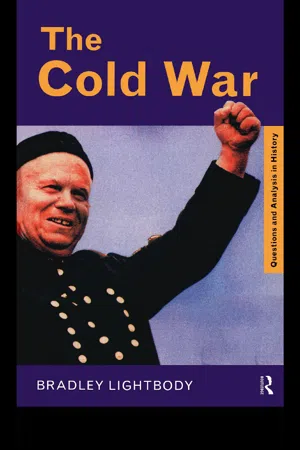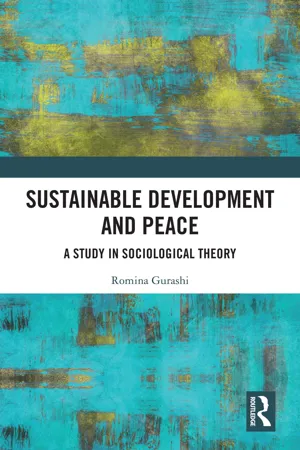History
Peaceful Coexistence
Peaceful coexistence refers to the idea of nations or groups living together without engaging in conflict or aggression. It often involves respecting each other's sovereignty, refraining from interference in internal affairs, and resolving disputes through peaceful means. This concept has been particularly relevant in international relations, where it has been advocated as a way to maintain global peace and stability.
Written by Perlego with AI-assistance
Related key terms
3 Key excerpts on "Peaceful Coexistence"
- eBook - ePub
Japan and the Wider World
From the Mid-Nineteenth Century to the Present
- Akira Iriye(Author)
- 2014(Publication Date)
- Routledge(Publisher)
First of all, the term ‘Peaceful Coexistence’ began to be used in the Soviet Union after Stalin’s death in 1953, and in the United States, too, some started speaking of ‘a truce in the Cold War’. What such expressions suggested was the growing recognition that, despite the two superpowers’ continued arms build-ups, their nuclear armament might not necessarily lead to war. At that time, neither power was willing to take steps to reduce its armaments and to establish a more peaceful relationship, but at least it seemed possible, and desirable, to grope for a definition of international relations that was not interchangeable with militarization. Peaceful Coexistence emphasized the idea that in an increasingly militarized world, war was not inevitable – at least that efforts should be made to prevent war. Such thinking was reminiscent of the classical balance-of-power thought, but while the traditional balance of power could always break down, thus making international relations that much more unstable, the new Peaceful Coexistence idea was more complex, and more abstract in that it was seeking a peaceful alternative to nuclear armament even while the arms build-up continued. More specifically, it was believed possible to develop non-military ties, such as economic and cultural interchanges, between the two power blocs. None could predict how such a world, characterized at one level by militarization and at another by economic and cultural contact, would look, and whether this would ultimately end the US–Soviet confrontation. But even if the two powers’ hegemonic position in world affairs might not be altered, it seemed worth pursuing these other paths as well. Such thinking was behind Vice-President Richard Nixon’s trip to the Soviet Union in July 1959, or Chairman Niki ta Khrushchev’s trip to the United States two months later.How such contacts would translate into a new pattern of US–Soviet relations was not at all clear. For instance, in 1956, when Poles and Hungarians rose up against Soviet domination of their countries and were suppressed brutally by Soviet military force, the United States did not intervene. This may have been an instance of Peaceful Coexistence; the episodes indicated a superpower’s unwillingness to interfere with the affairs of another superpower in its sphere of influence, even while both sought to strengthen their respective alliance systems. Increased commercial and cultural contact might mean Poles and Hungarians were coming under increasing Western influence, but the Soviet Union would not tolerate such a situation developing into political instability and creating a challenge to the solidarity of the Eastern bloc. This was clearly a negative instance of the application of Peaceful Coexistence. At the same time, however, the superpowers were - eBook - ePub
- Bradley Lightbody(Author)
- 2005(Publication Date)
- Routledge(Publisher)
Ultimately, Peaceful Coexistence failed against Communist China’s commitment to military force and the United States’ conviction of a Soviet threat in Asia, the Third World and space.In August 1961 the Soviet Union was humbled as the Berlin Wall was constructed to save East Germany from ignominious economic collapse. Peaceful Coexistence had failed to attract Western concessions, particularly a settlement of divided Germany and as the wall rose Peaceful Coexistence collapsed.1. In what ways did Peaceful Coexistence alter the nature of the Soviet challenge to the West? 2. How significant was the rise of Communist China to the rejection of Peaceful Coexistence?QuestionsSOURCES
1. Peaceful Coexistence
Source A: Prime Minister Eden at Geneva.
In his memoirs Eden recorded his impression of the summit talks with President Eisenhower, Prime Minister Faure and Soviet Party Secretary Khrushchev, July 1955.Every country present learnt that no country attending wanted war and each understood why. The Russians realised, as we did, that this situation had been created by the deterrent power of thermo-nuclear weapons. Accordingly, they were determined to keep a free hand to develop these weapons as far and as fast as their country’s very considerable resources would take them… The communist powers would continue to prosecute their purpose by every means. To do this they would work in areas, and by methods, including the use of conventional weapons, which they believed would not entail retaliation by nuclear weapons.Source B: Khrushchev at Geneva.
In his memoirs Khrushchev recorded his impressions of the Western powers.We returned to Moscow from Geneva knowing we hadn’t achieved any concrete results. But we were encouraged, realising now that our enemies probably feared us as much as we feared them. They rattled their sabers and tried to pressure us into agreements which were more profitable for them because they were frightened of us… They realised that they would have to build their relations with us on new assumptions and new expectations if they really wanted peace. The Geneva meeting was an important breakthrough for us on the diplomatic front. We had established ourselves as able to hold our own in the international arena. - eBook - ePub
Sustainable Development and Peace
A Study in Sociological Theory
- Romina Gurashi(Author)
- 2023(Publication Date)
- Routledge(Publisher)
2 as it involves an alternation between a more pervasive and a more minimalist view of the issue at hand.The problems of how to avoid the outbreak of war or internal conflict and how to avoid the passive quietism that fosters the spread of injustice have always been the subject of attention in different cultures, and each has responded to the challenge by providing different solutions.In Hebrew, the term shālōm emphasises the unity of the berîth (“Covenant”) between Yahweh and humanity and the realisation of the divine will for justice and prosperity (Ishida 1969 , 136); in Greek Εἰρήνη (eirene) indicated a state of unity and order within the polis that was indispensable for the development and functioning of democracy; in Latin pax was considered a state of order and absence of conflict, which could also be achieved by conquest. It could also indicate the relationship that originated as a result of a covenant. In the Indian language, on the other hand, the concept of peace is expressed through the term śānti, which indicates a situation of tranquillity of mind, completely separated from physical relational reality and the political order (Ishida 1969 , 137), while the term ahimsā indicates the will to reject violence and can be translated as “non-violence”. In the Chinese and Japanese world, however, concepts of peace were greatly influenced by Confucianism. The Chinese term ho p’ing denotes the desire to escape from the things of the world and take refuge in a well-ordered state of mind guaranteeing “obedience to the entire cosmic order, from which social order and natural order were inseparable” (Ishida 1969 , 138) while the Japanese concept of heiwa
Index pages curate the most relevant extracts from our library of academic textbooks. They’ve been created using an in-house natural language model (NLM), each adding context and meaning to key research topics.


